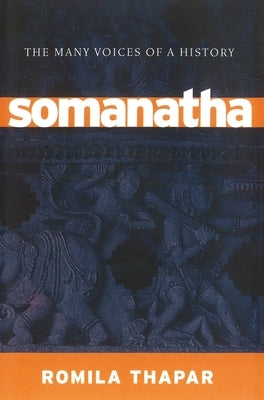Description
In 1026, Sultan Mahmud of Ghazni raided the Hindu temple of Somanatha (Somnath in textbooks of the colonial period). The story of the raid has reverberated in Indian history, but largely during the raj. It was first depicted as a trauma for the Hindu population not in India, but in the House of Commons. The triumphalist accounts of the event in Turko-Persian chronicles became the main source for most eighteenth-century historians. It suited everyone and helped the British to divide and rule a multi-millioned subcontinent. In her new book, Romila Thapar, the doyenne of Indian historians, reconstructs what took place by studying other sources, including local Sanskrit inscriptions, biographies of kings and merchants of the period, court epics and popular narratives that have survived. The result is astounding and undermines the traditional version of what took place. These findings also contest the current Hindu religious nationalism that constantly utilises the conventional version of this history.
Author: Romila Thapar
Publisher: Verso
Published: 03/31/2015
Pages: 288
Binding Type: Paperback
Weight: 0.75lbs
Size: 8.40h x 5.40w x 0.70d
ISBN13: 9781784780654
ISBN10: 1784780650
BISAC Categories:
- History | Asia | South | General
- History | Europe | Medieval
- Religion | Hinduism | History
Author: Romila Thapar
Publisher: Verso
Published: 03/31/2015
Pages: 288
Binding Type: Paperback
Weight: 0.75lbs
Size: 8.40h x 5.40w x 0.70d
ISBN13: 9781784780654
ISBN10: 1784780650
BISAC Categories:
- History | Asia | South | General
- History | Europe | Medieval
- Religion | Hinduism | History
About the Author
Romila Thapar is Emeritus Professor in History at the Jawaharlal Nehru University. She has served as visiting professor at Cornell University and the University of Pennsylvania and is currently the Kluge Chair in Countries and Cultures of the South at the Library of Congress. Among her previous books are Ashoka and the Decline of the Mauryas, Indian Tales, and The Penguin History of Early India: From the Origins to AD 1300.

